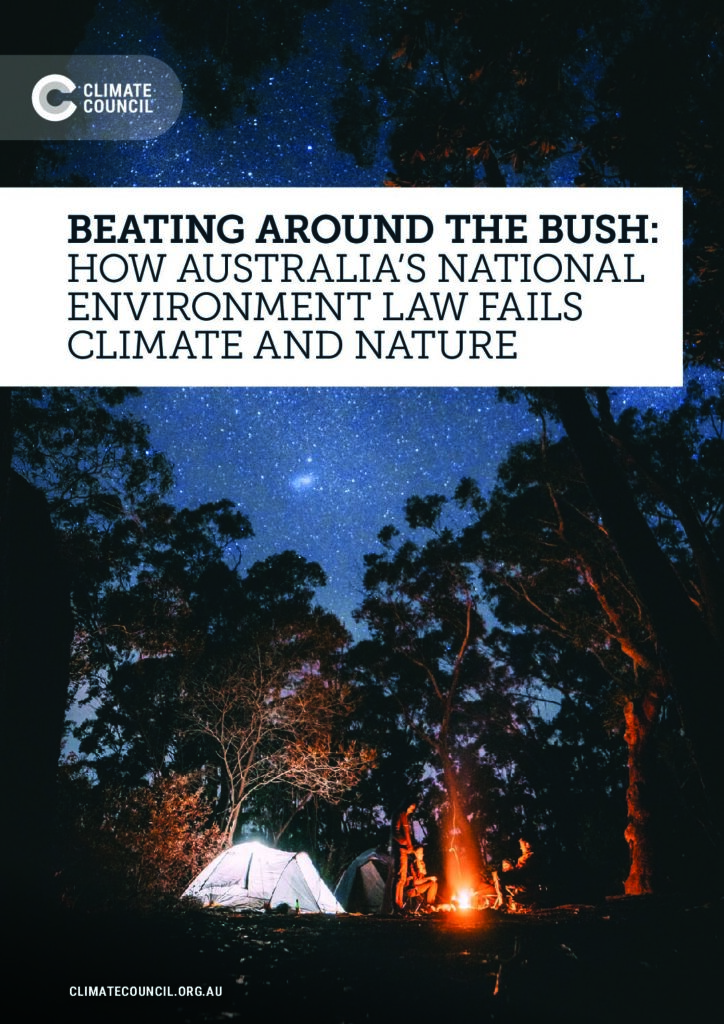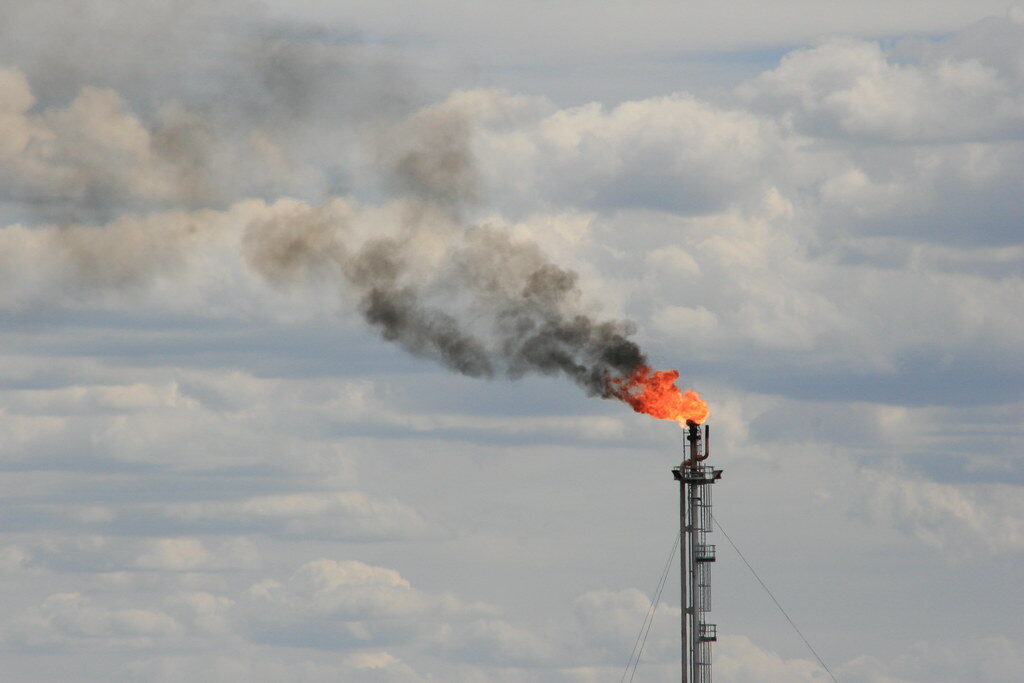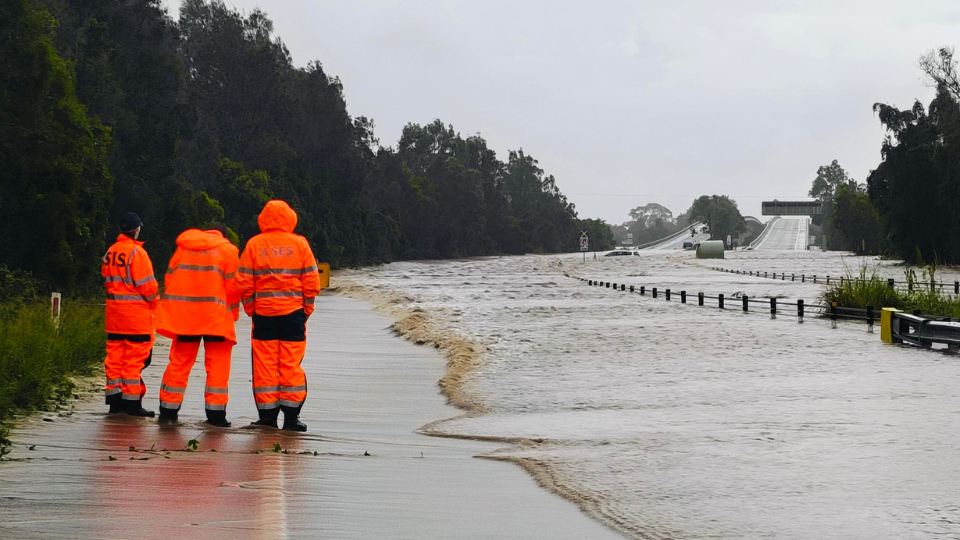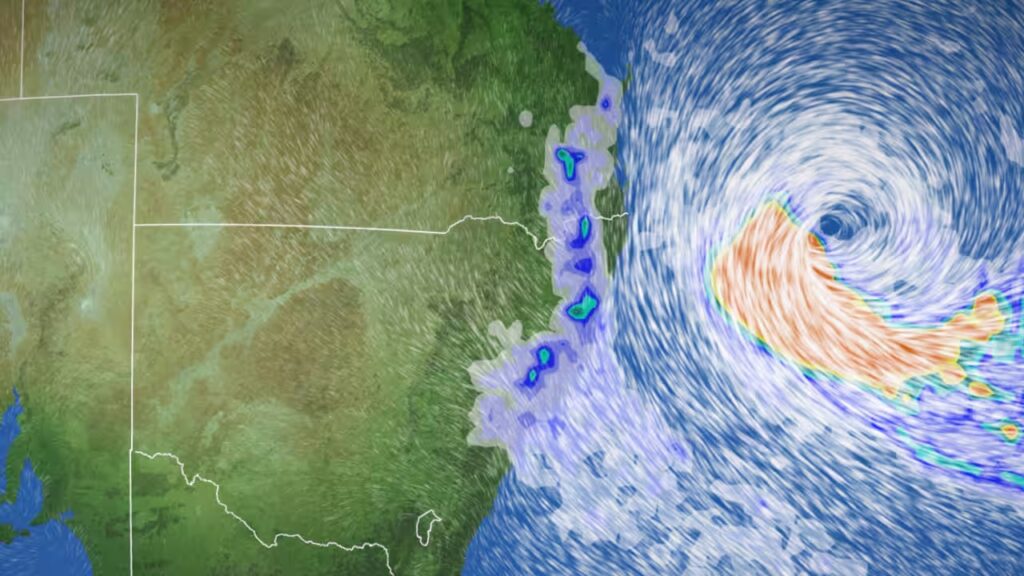Right now, Australia’s environment is under grave threat from climate change; facing some of the greatest risks in human history. Accelerating climate change is also turbocharging other threats like habitat destruction and proliferation of invasive species. Collectively, this is pushing many natural places around the country to the brink of ecological collapse.
Australia’s main national environment law – the Environment Protection and Biodiversity Conservation (EPBC) Act 1999 – is supposed to protect the animals, plants, landscapes and ecosystems that are our shared natural endowment. It is failing in this essential task, in no small part because the law does not explicitly address climate change. Like a house caught up in a wild storm without a roof, our key environmental law does not provide any direct protection from the greenhouse gas emissions that are driving dangerous climate change.
The law is also failing to protect the environment in other ways: forests are being cleared, habitats lost, invasive species are running rampant. A wide range of animals and plants are being pushed to the brink of extinction because of a piecemeal approach to project approvals and a lack of enforcement or accountability for good environmental management.
It’s time to fix this. Australia needs a strong national environment law which properly deals with climate change and genuinely protects nature, to help prevent runaway global warming and shield our precious biodiversity from its impacts.
Beating around the bush: How Australia’s environment law is failing climate and nature collates the scientific evidence that explains how climate change harms nature, and the impacts already being experienced by species and landscapes that our environment law was designed to protect – like one-of-a- kind plants and animals, and iconic places like the Great Barrier Reef (see, for example, Climate Council 2019).
Informed by climate science and expert policy insights, this report also outlines the priority improvements our Federal Parliament should urgently make to Australia’s national environment law in order to fix its fundamental flaw on climate change.
During this make-or-break decade for action, we have an opportunity to fix our national environment law and help prevent the worst impacts of harmful climate change. If we get it right, this can be a reform that delivers a lasting legacy for us all.
We protect the things we hold dear, and right now Australia’s environment needs legal protection from climate damage.
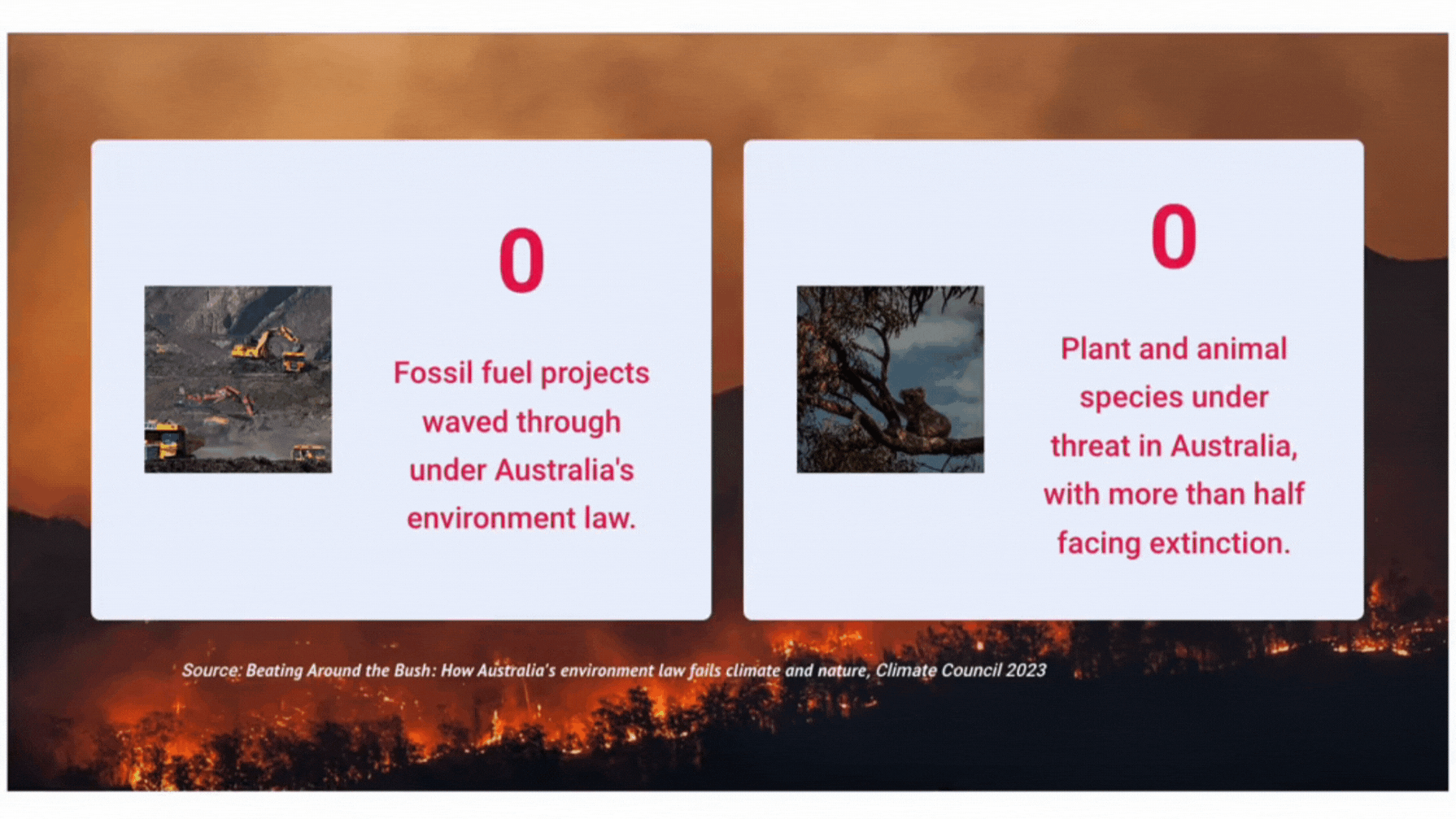
Download the summary for policy makers here
Key Findings:
1. From koalas to the great river red gum, Australia is home to some of the most remarkable plants, animals and ecosystems on our planet. Sadly, widespread climate damage is already evident.
- Australia is a global biodiversity hotspot. It’s home to more than a million plant and animal species, a majority of which are found nowhere else, and are irreplaceable.
- Iconic species like the koala and river red gum are core to Australian identity and culture. Our unique environment acts as both our life support system – providing the air, water and food we need to survive – as well as a source of enjoyment, wellbeing and wonder.
- People flock from around the world to visit our many World Heritage Sites such as Kakadu, the Wet Tropics of Queensland, the Gondwana Rainforests, and the Great Barrier Reef. A recent CSIRO-led study affirmed that these sites are already suffering damage due to climate change.
- Australia has entered a new era of megafires, more powerful storms and lethal heatwaves that are devastating habitats, drying rivers, and killing or displacing billions of animals and plants.
2. Escalating climate change is harming our environment in many ways; and poses an unprecedented threat to the Australian plants, animals and places that our national environment law was set up to protect.
- Climate change is worsening bushfire conditions, with the 2019-20 Black Summer fires killed or displacing an estimated three billion vertebrate animals and 60 billion invertebrates. As a result, hundreds of species became threatened for the first time, or moved closer to extinction. Fire experts warn of extreme summers over the next two years; putting more animals and habitats at risk.
- Ongoing droughts linked to climate change are pushing the red stringybark trees to extinction. This 40,000-year-old species, only found in the Clare Valley in South Australia, is under rapid decline.
- A pattern of more frequent, intense rainfall events due to climate change is well established in Australia. Following the 2022 Queensland and New South Wales floods, many dugongs starved to death when their food source was killed off by silt runoff.
- Worsening marine heatwaves, driven by climate change, are devastating fragile ecosystems like the Great Barrier Reef, which suffered four mass bleaching events in the past decade.
- A review in 2021 of 19 of our most iconic ecosystems concluded that all were exhibiting signs of collapse in at least part of their range, with climate change cited as a common factor.
3. Our national environment law, the Environment Protection and Biodiversity Conservation Act 1999, is failing. It has a massive fundamental flaw when it comes to climate change, which is leading to perverse outcomes.
- High-polluting projects continue to be approved under this law, because it doesn’t explicitly address climate change or the harmful greenhouse gas emissions that fuel it. Since the Act was passed in 1999, 740 fossil fuel projects have been approved, or waved through without assessment.
- In Australia, 1,918 species of plants and animals are now under threat, with more than half of those at high risk of extinction.
- An independent review of the law in 2020 concluded that it was ineffective and ill-equipped for challenges like climate change.
- Proposed adjustments to this law don’t go far enough to shield the precious species, habitats and biodiversity this Act is supposed to protect, because they don’t address the biggest environmental threat we now face: climate change.
4. As the most significant threat to our environment, climate change needs to be embedded throughout an updated law that specifically shields our precious biodiversity and nature from its impacts.
- Make ‘maintaining a safe and liveable climate’ both an Object and a Matter of Significance of the EPBC Act, so all decisions taken are consistent with holding global warming as close as possible to 1.5°C.
- Assess all lifetime emissions (Scope 1, 2 and 3) of each project under the Act against science-based global and national carbon budgets.
- Reject carbon offsetting and unproven technologies – which fail to address climate change and its impacts – as part of project Environmental Management Plans.
- Put project approvals in the hands of an independent agency, such as the new national Environment Protection Agency, rather than the federal Environment Minister.
- Accelerate projects that underpin decarbonisation and the sustainable growth of new essential industries, wherever this can be done without compromising the core environmental, social and cultural values the Act should protect, for example, by designating priority sectors and zones in Australia.
